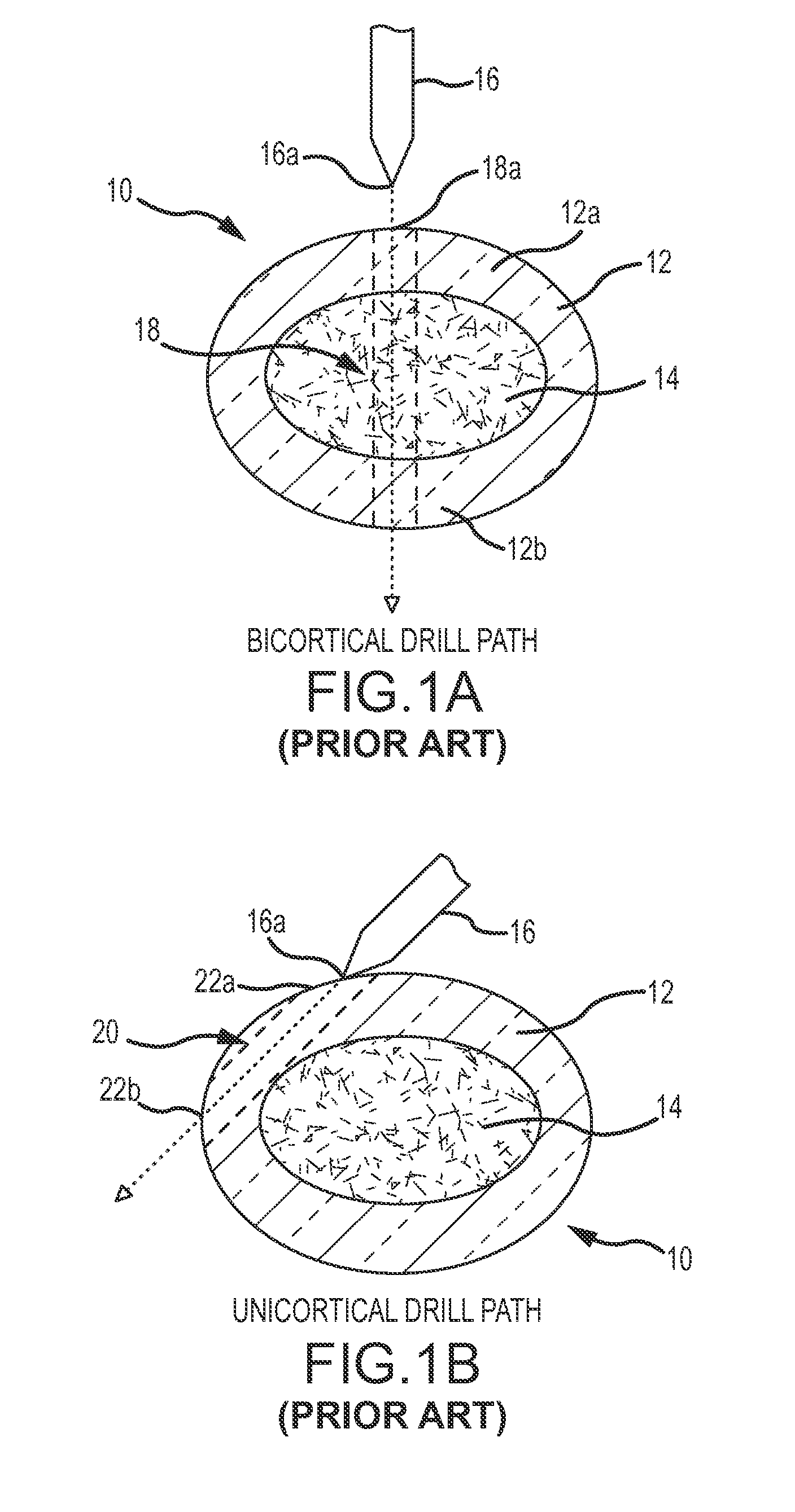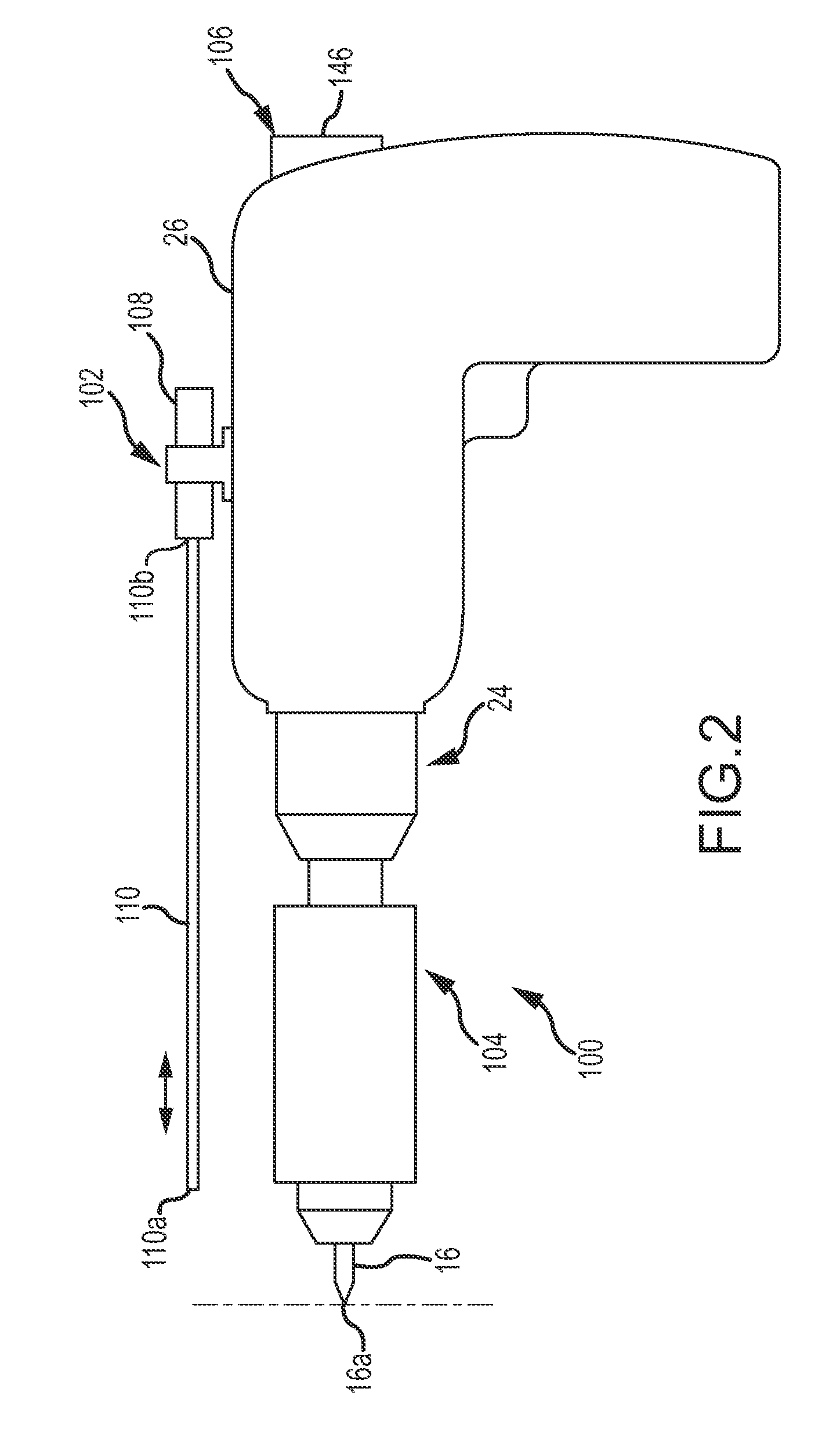Drill with depth measurement system
a technology of depth measurement and drill bit, which is applied in the field of drill bit with depth measurement system, can solve the problems of device instability, time-consuming procedure for determining the correct screw length of the bore, and surgical complications, so as to facilitate relative rotational movement, improve ergonomics, and improve accuracy of displacement measuremen
- Summary
- Abstract
- Description
- Claims
- Application Information
AI Technical Summary
Benefits of technology
Problems solved by technology
Method used
Image
Examples
Embodiment Construction
[0077]Certain terminology is used in the following description for convenience only and is not limiting. The words “right,”“left”, “lower” and “upper” designate directions in the drawings to which reference is made. The words “inwardly” and “outwardly” refer to directions toward and away from, respectively, the geometric center of the drill bit penetration measurement system and designated parts thereof. The terminology includes the words above specifically mentioned, derivatives thereof and words of similar import.
[0078]Additionally, as used in the claims and in the corresponding portion of the specification, the word “a” means “at least one”. Further, unless otherwise defined the word “about” when used in conjunction with a numerical value means a range of values corresponding to the numerical value plus or minus ten percent of the numerical value. Still further, the word “or” has the meaning of a Boolean inclusive “Or”. For example, the phrase “A or B” means “A” alone or “B” alon...
PUM
 Login to View More
Login to View More Abstract
Description
Claims
Application Information
 Login to View More
Login to View More - R&D
- Intellectual Property
- Life Sciences
- Materials
- Tech Scout
- Unparalleled Data Quality
- Higher Quality Content
- 60% Fewer Hallucinations
Browse by: Latest US Patents, China's latest patents, Technical Efficacy Thesaurus, Application Domain, Technology Topic, Popular Technical Reports.
© 2025 PatSnap. All rights reserved.Legal|Privacy policy|Modern Slavery Act Transparency Statement|Sitemap|About US| Contact US: help@patsnap.com



